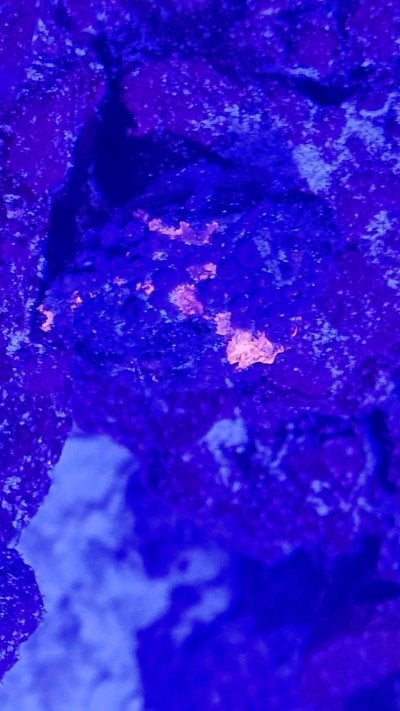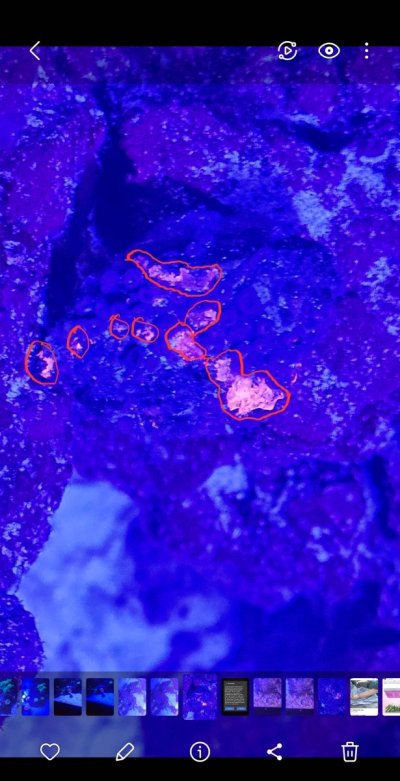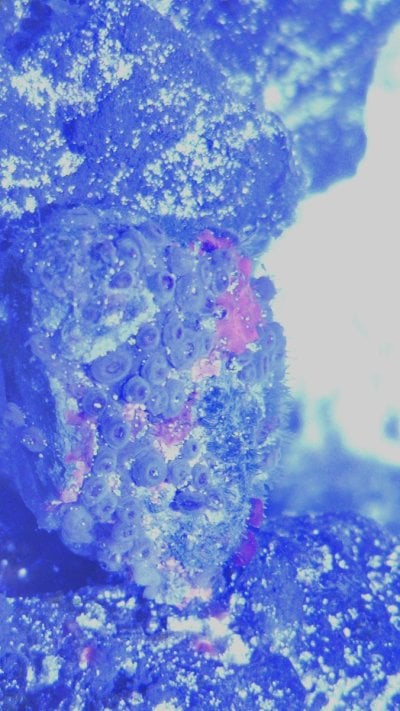So yesterday I noticed my gsp hasn't been opening lately. I decided to take the rock it's growing on out and dip it and clean it. When I put it back in under blue light I noticed something red on it the size of a pea. Today I noticed it on my zoanthids as well. So far it's just those two coral. Is it a pest? If it is what is it and how do I treat it?
























